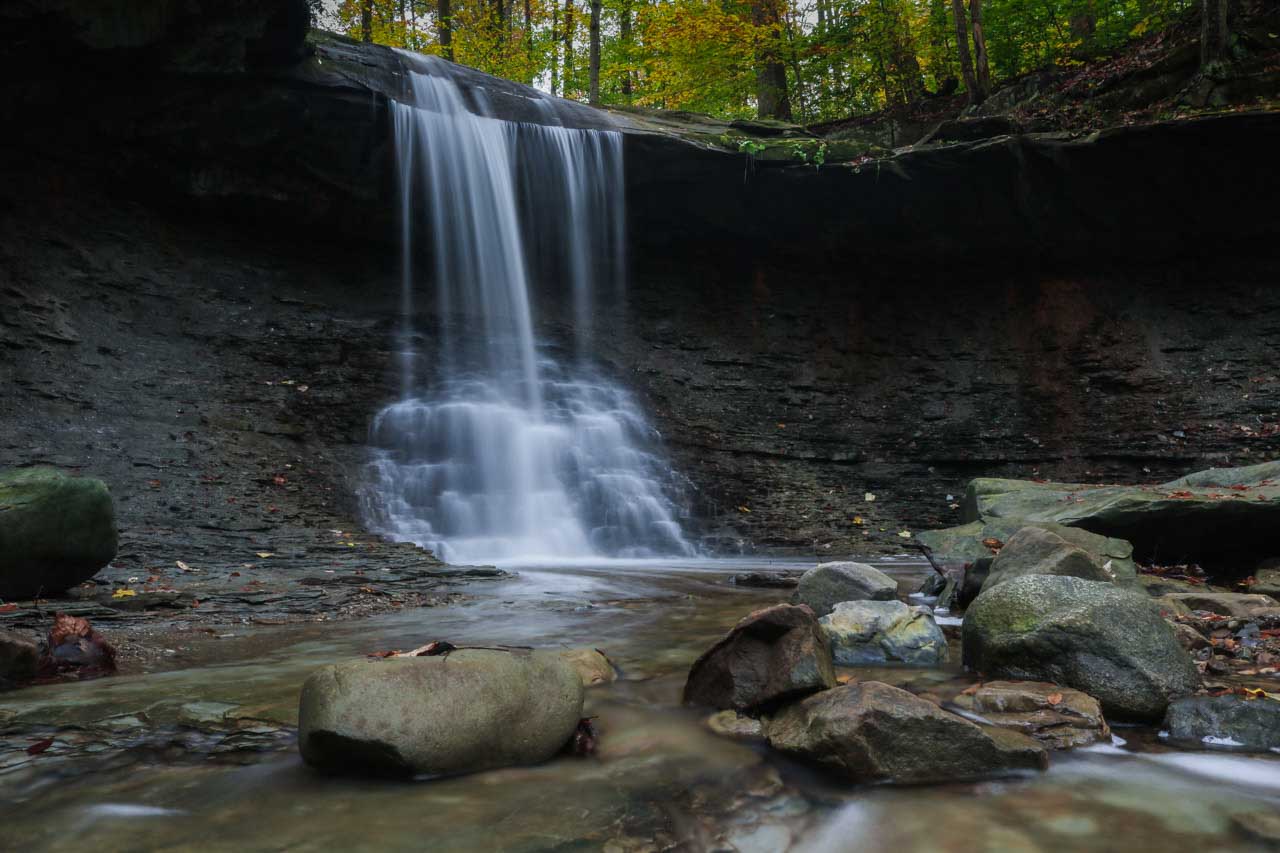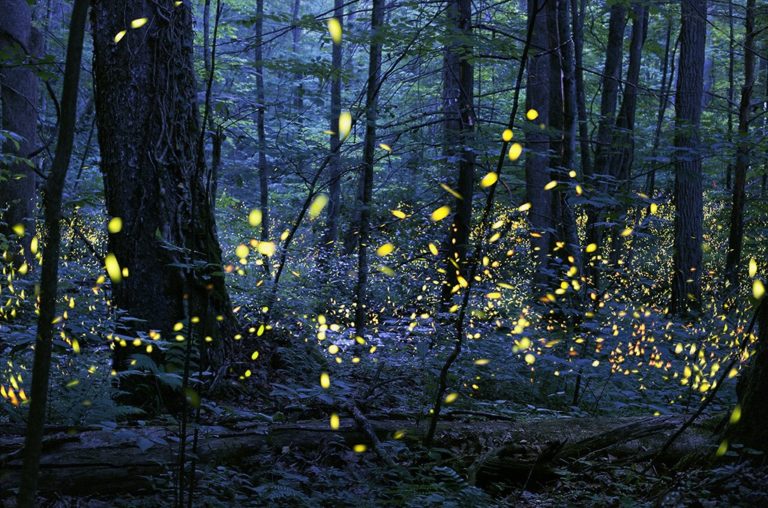10 Must-Visit National Parks Near Chicago
Set on the southern shore of Lake Michigan, Chicago has no lack of natural areas and parks, offering visitors a wide range of outdoor recreation opportunities. From wind surfing, SUPing and kayaking to sunbathing, hiking and cycling, there’s plenty to do in the Windy City.
Additionally, there are also numerous national parks, monuments and other National Park Service sites within (relatively) easy driving distance from Chicago.
Whether you’re looking to visit a couple of the “actual” national parks, such as Indiana Dunes and Cuyahoga Valley, or want to check off other NPS units, from the Lincoln Home to Pictured Rocks, Chicago is a great starting point for a national parks road trip in the Great Lakes region.
In this post, you’ll find several beautiful and fascinating National Park Service sites near Chicago, including national parks, national monuments, lakeshores and historic sites.
All are within a half day’s drive from Chicago, spread across six states in the upper Midwest and Great Lakes region.
Top 10 Closest National Parks to Chicago
This Chicago national parks post contains affiliate links. You can read more about our Terms of Use / Disclosure here.
1. Pullman National Historical Park, Illinois
Distance from Chicago to Pullman National Monument: 0-15 miles (0-30 minutes)
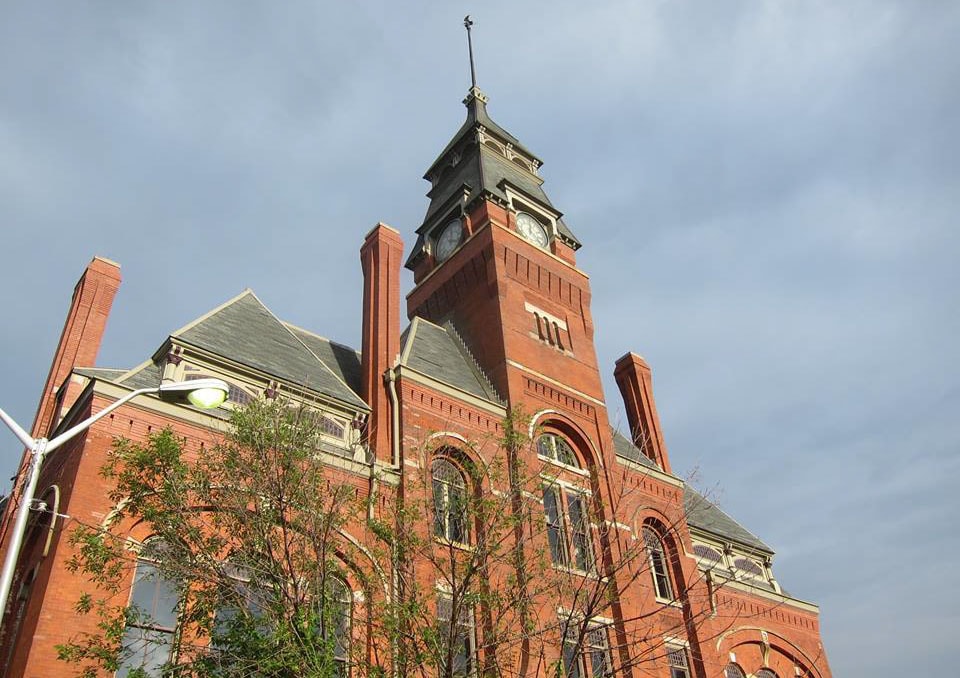
Also known as the Pullman Historic District, Pullman National Monument preserves the site of the first model-planned industrial community in the U.S.
The district is a significant historic site because of its origins in the Pullman Car Company, which manufactured railroad cars from the late-19th century to the early-20th century. Notably, this was also the setting of the violent Pullman strike in 1894.
It’s a great place to learn about workers’ rights, civil rights and the history of African American labor in the North.
Pullman National Monument, created by President Obama in 2015, is the first National Park Service site in Chicago. It encompasses the Administration Buildings and Pullman Factory, and Hotel Florence.
The A. Philip Randolph Pullman Porter Museum is named after a prominent African American labor activist and unionist. In 1925, A. Philip Randolph founded the Brotherhood of Sleeping Car Porters, a union of African American laborers.
At the time, 44% of Pullman’s workforce were porters—luggage carriers—which made Pullman the largest employer of African Americans in the United States.
If you’re planning a Chicago national parks road trip, this would be a fantastic place to start.
More information: https://www.nps.gov/pull/index.htm
2. Indiana Dunes National Park, Indiana
Distance from Chicago to Indiana Dunes National Park: 35 miles (45 minutes)
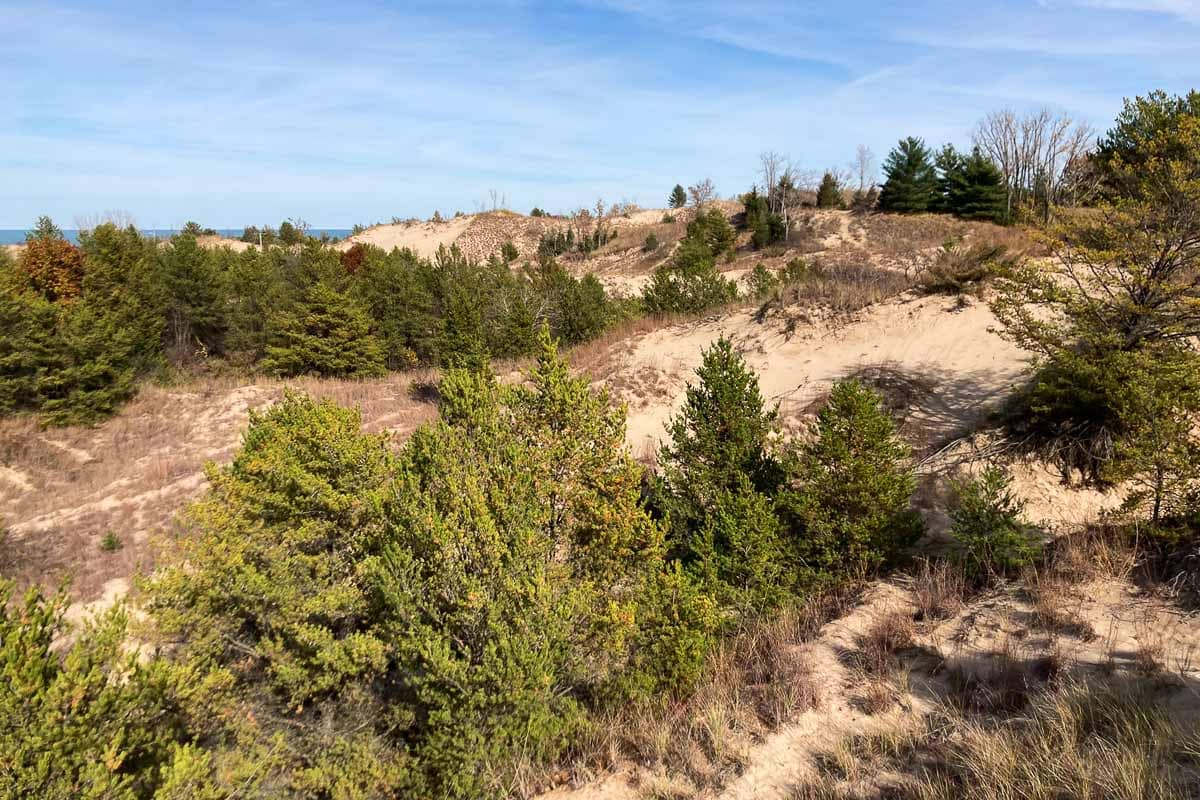
The only national park in Indiana and the closest national park to Chicago, Indiana Dunes National Park straddles a 15-mile section of the southern shoreline of Lake Michigan.
The park is a popular destination on the Great Lakes thanks to its beautiful sandy beaches and great bird watching opportunities.
Just behind the beaches lie a series of stunning sand dunes, which rise up to 200 feet high. There are also sand valleys, blowouts and ridges to explore.
In addition to these scenic dunes, you can hike through prairie landscapes, marshes and bogs, forests and oak savanna.
After exploring the Indiana Dunes and the park’s other scenery, you can cool off with a refreshing dip in shimmering Lake Michigan. The Dunewood Campground offers the chance to spend the night in this wonderful national park near Chicago.
More information: https://www.nps.gov/indu/index.htm
3. Lincoln Home National Historic Site, Illinois
Distance from Chicago to Lincoln Home National Historic Site: 200 miles (3 hours 15 minutes)
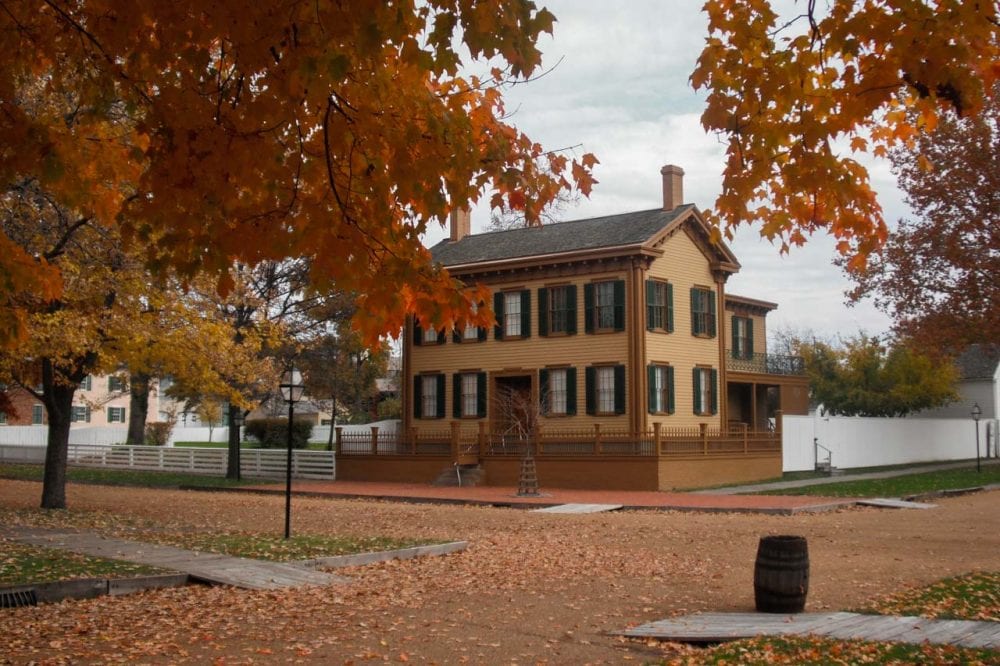
Located along Route 66 in St. Louis, Illinois, about 200 miles from Chicago, the Lincoln Home National Historic Site preserves the former home and neighborhood of Abraham Lincoln.
This is where he lived from 1844 to 1861 before he became the 16th U.S. president.
The center of this amazing park is the historic Lincoln home, which, incidentally, was the only house Lincoln ever owned.
Additionally, the site encompasses the four blocks around the house, while a visitor center provides lots of fascinating background information.
Besides being one of the greatest presidents in U.S. history, Lincoln was, of course, also just another human being. He was a husband and a parent, a neighbor and a friend.
The Lincoln Home National Historic Site shows not just who Lincoln was as a U.S. president, but also what kind of man he was in his everyday life.
More information: https://www.nps.gov/liho/index.htm
4. Herbert Hoover National Historic Site, Iowa
Distance from Chicago to Herbert Hoover National Historic Site: 210 miles (3 hours 15 minutes)
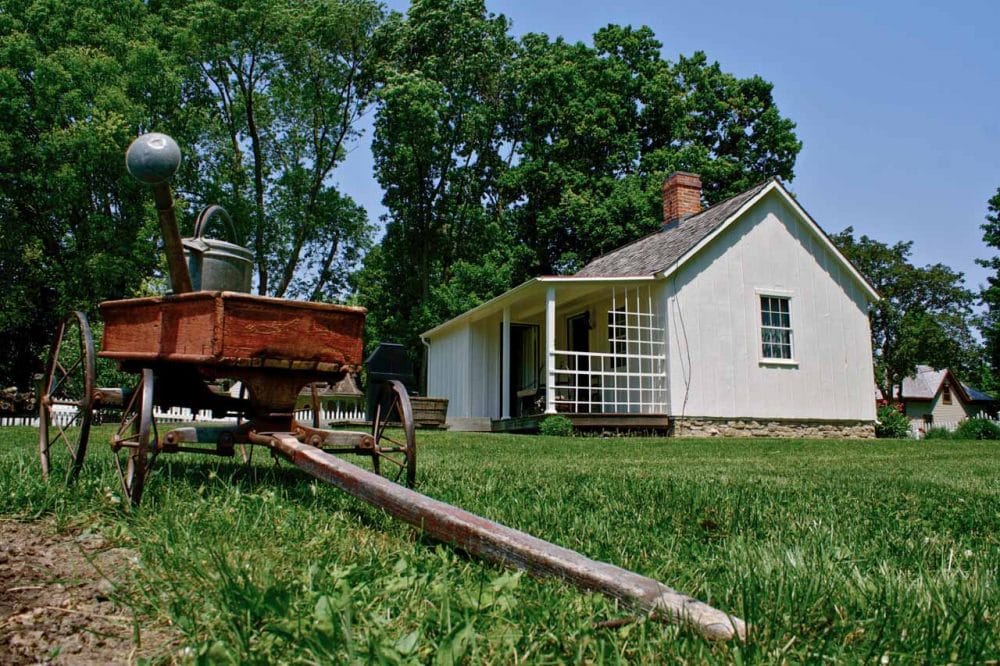
Preserving the birthplace and childhood home of America’s 31st president, the Herbert Hoover National Historic Site is in West Branch, Iowa.
Shortly after becoming an orphan when he was only nine years old, Hoover left West Branch to live with his uncle on a nearby farm and, two years later, moved to Oregon to live with another uncle.
Despite this difficult youth, Hoover became a successful mining engineer, accumulating enormous wealth by working on projects in China and Australia.
His presidency, however, suffered from the impact of the Great Depression and he only served one term, before being defeated by Franklin D. Roosevelt.
At the Herbert Hoover National Historic Site, you can learn about Hoover’s legacy and visit the Birthplace Cottage, the Gravesite, the Herbert Hoover Presidential Library & Museum and several other historic buildings.
More information: https://www.nps.gov/heho/index.htm
5. Effigy Mounds National Monument, Iowa
Distance from Chicago to Effigy Mounds National Monument: 255 miles (4 hours 15 minutes)
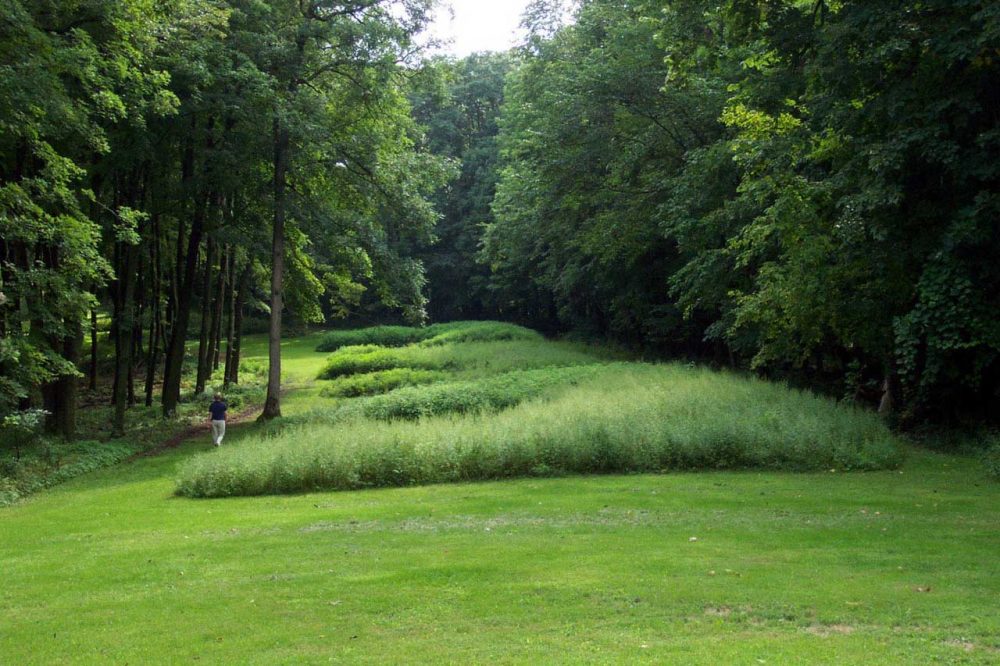
Preserving no fewer than 200 prehistoric mounds, Effigy Mounds National Monument is one of the most important national parks with Native American heritage sites in the central United States.
Most of these mounds were shaped like animals (effigies), which was a cultural tradition typical for this region along the Upper Mississippi.
They resembled common woodland and grassland animals like bears, bison, deer, birds, lynx and mountain lions.
In addition to these animal-shaped mounds, there were also rectangular and linear mounds. To this day, their purpose remains unclear.
This fascinating national monument, just over four hours by car from Chicago, features hiking trails, ranger programs and a visitor center, all of which can give you a deeper insight into the lives and traditions of the Effigy Moundbuilders.
More information: https://www.nps.gov/efmo/index.htm
6. River Raisin National Battlefield Park, Michigan
Distance from Chicago to River Raisin National Battlefield Park: 270 miles (4 hours 15 minutes)
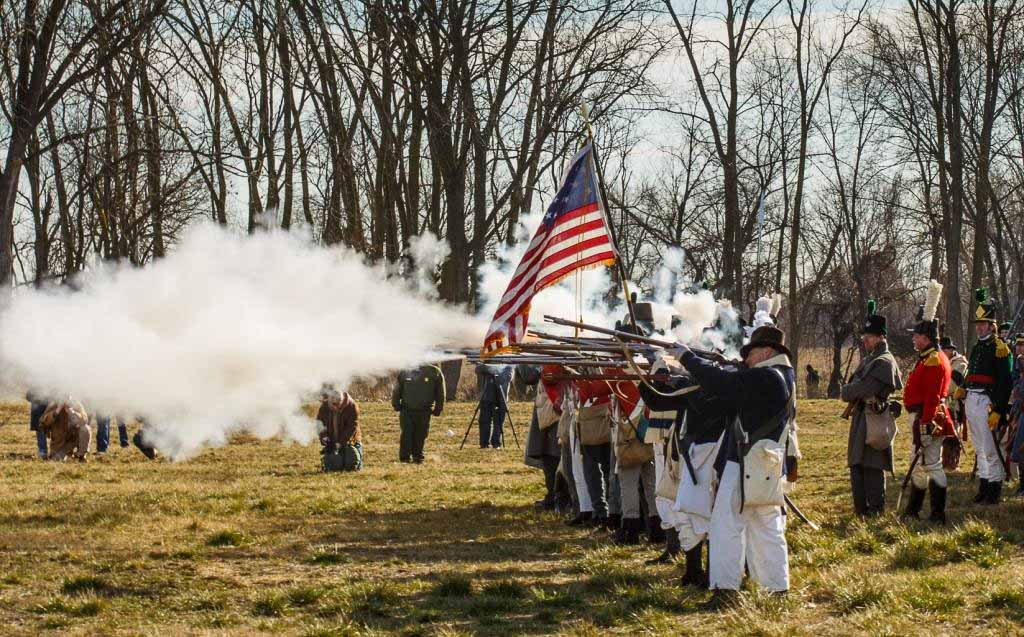
Situated in southeastern Michigan, River Raisin National Battlefield Park is the only national battlefield that preserves a site of the War of 1812. It is about 270 miles to the east of Chicago.
This fascinating battlefield park commemorates and interprets the battles of January 1813 in Monroe and Wayne counties.
Specifically, it preserves the site of the Battle of Frenchtown, in which 387 American soldiers were killed and another 547 taken prisoner by an alliance of the British and Native Americans.
That battle was the greatest victory of the Native American confederation of Tecumseh in the Way of 1812, as well as the greatest defeat of the U.S. Army.
The rally cry “Remember the Raisin!” resulted from this battle, inspiring Americans to support the continued war efforts after early-1813.
More information: https://www.nps.gov/rira/index.htm
7. Gateway Arch National Park, Missouri
Distance from Chicago to Gateway Arch National Park: 295 miles (4 hours 30 minutes)
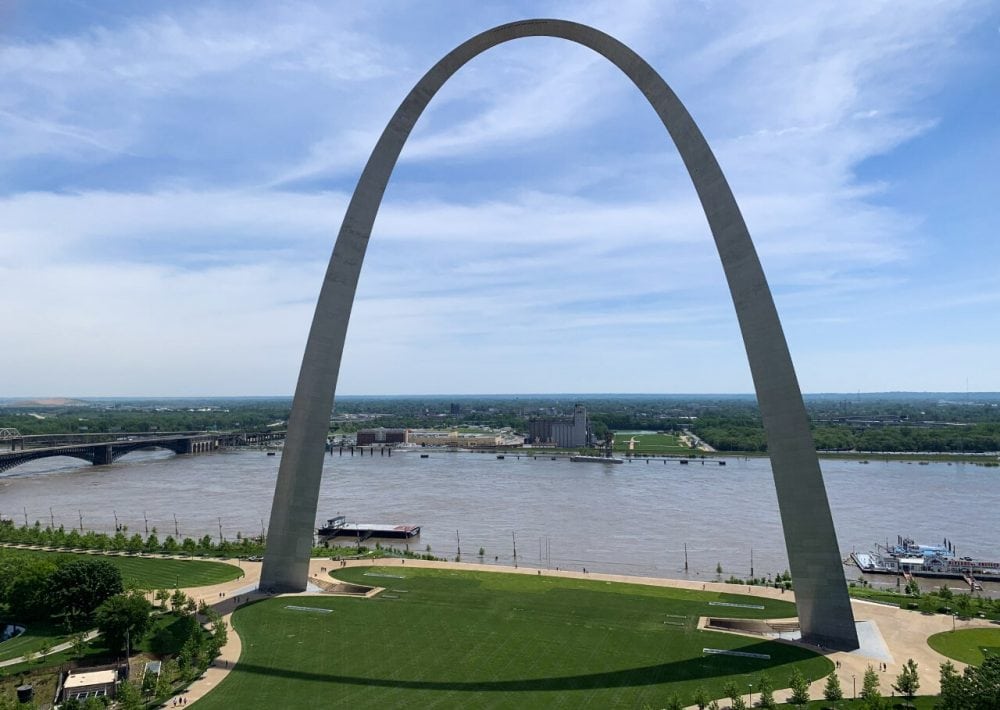
Formerly known as the Jefferson National Expansion Memorial, Gateway Arch National Park is one of the newest national parks in America, renamed and redesignated in 2018.
It’s located in downtown St. Louis near the spot where the Lewis and Clark Expedition departed in 1804.
It commemorates the importance of the city of St. Louis in the western expansion of the United States and is a memorial to Thomas Jefferson’s role in opening the West.
Specifically, it commemorates the Louisiana Purchase, the debate of slavery in the Dred Scott case and the first civil government west of the Mississippi River.
Gateway Arch National Park is the smallest national park in the United States and the only one that doesn’t protect a natural area.
Nonetheless, it’s a super-significant site in the story of the nation. In a sense, while there are dozens of other National Park Service sites in cities, this is the only true “urban national park” in the country.
Located in downtown St. Louis, Gateway Arch is directly on historic Route 66, one of only two major national parks along that legendary highway.
More information: https://www.nps.gov/jeff/index.htm
8. Sleeping Bear Dunes National Lakeshore, Michigan
Distance from Chicago to Sleeping Bear Dunes National Lakeshore: 335 miles (5 hours 15 minutes)
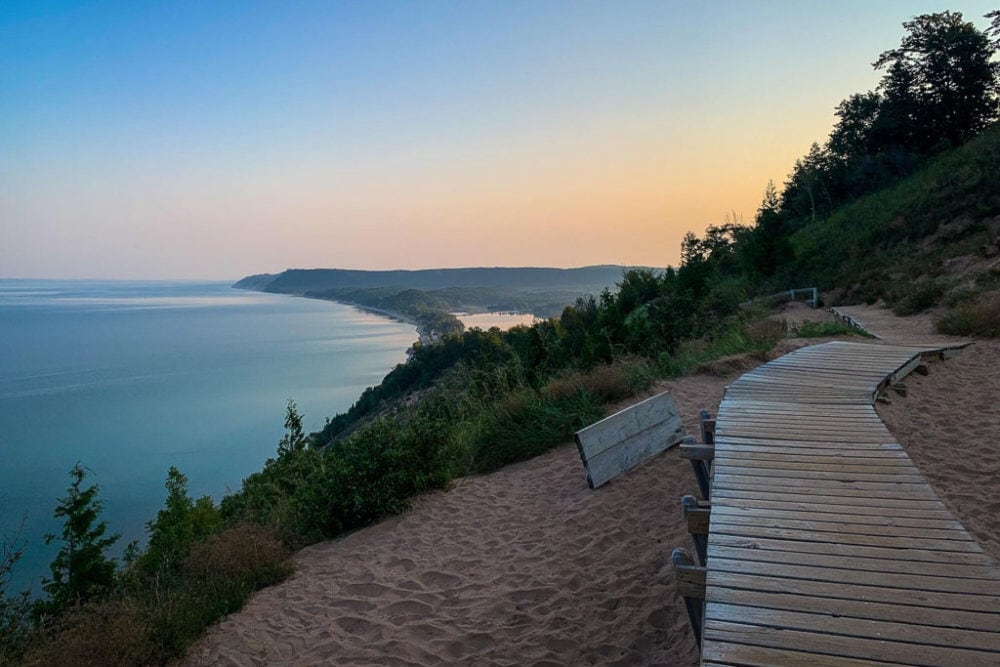
Established in 1970 for its amazing and diverse natural features, Sleeping Bear Dunes National Lakeshore is a less-known gem in the sparkling crown of America’s national parks.
Situated just over five hours from downtown Chicago, the Sleeping Bear Dunes encompass 35 miles of Lake Michigan shoreline, home to sandy beaches, pristine inland lakes, verdant forests and towering lakeshore sand dunes.
The national lakeshore also includes two islands: South and North Manitou Islands.
Other attractions in this beautiful area on Michigan’s Lower Peninsula are coastal villages and farms, U.S. Life-Saving stations, maritime museum and a striking lighthouse.
Activities range from swimming, tubing, canoeing and scuba diving to hiking, dune climbing, fishing and cycling.
In winter, the park offers fantastic cross-country skiing and snowshoeing opportunities, especially on the Sleeping Bear Heritage Trail.
In 2011, viewers of ABC’s Good Morning America voted Sleeping Bear Dunes National Lakeshore as the “Most Beautiful Place in America.”
More information: https://www.nps.gov/slbe/index.htm
9. Cuyahoga Valley National Park, Ohio
Distance from Chicago to Cuyahoga Valley National Park: 350 miles (5 hours 25 minutes)
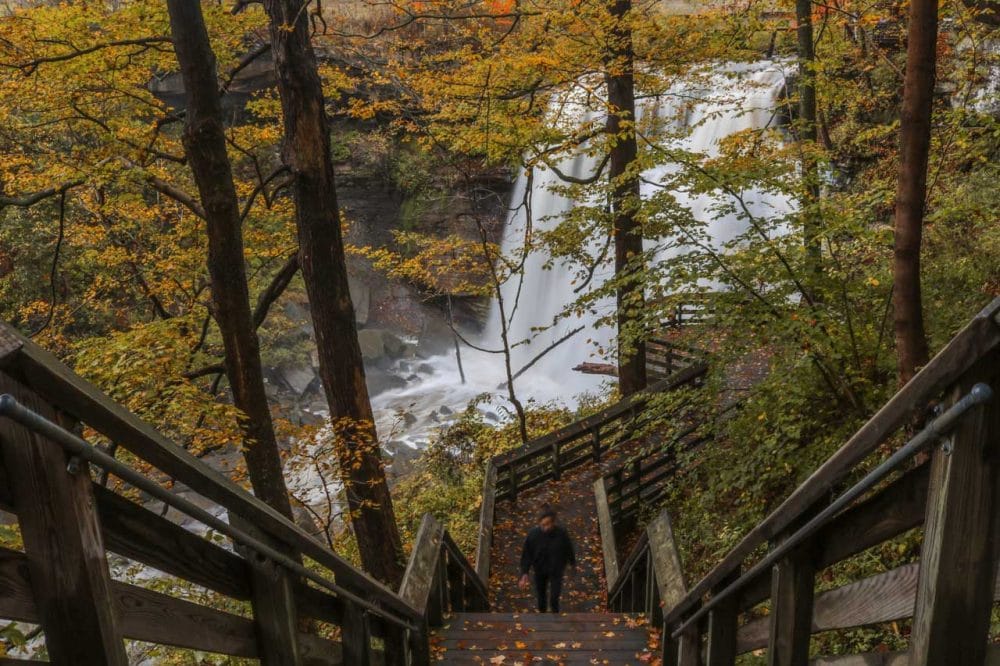
Set between Cleveland and Akron, Ohio, Cuyahoga Valley National Park is a verdant oasis surrounded by urban development. The park has historic farms, waterfalls and wildlife, a covered bridge and a scenic railroad.
Thanks to its location near major cities, including Chicago, which is 350 miles to the west, Cuyahoga Valley is one of America’s most visited national parks. Interestingly, it’s arguably also among the least known parks.
Cuyahoga Valley National Park is mainly an urban and cultural park, although there is definitely some wildness and plenty of natural beauty to be found as well.
In fact, protecting and preserving nature in this heavily urbanized region is precisely how the park came into being.
Native Americans had used “Ka-ih-ogh-ha”—meaning ‘crooked river’—for thousands of years as an important transportation artery before the first European explorers arrived in the area.
Europeans quickly realized the potential of this verdant and fertile valley and word about it spread swiftly. As more and more settlers moved in from the East, new transportation methods originated.
First, a canal was dug between Cleveland and Akron, the Ohio & Erie Canal, connecting Ohio with the markets on the eastern seaboard.
Later on, the Industrial Revolution called for something faster and bigger.
This resulted in the construction of several railroads, one of which is still in use as the wonderful Cuyahoga Valley Scenic Railroad.
As the region flourished throughout the 19th and early-20th centuries, cities sprawled and development crept ever outward. Locals escaped to the wilderness of the Cuyahoga Valley to picnic, play, walk and recreate.
In order to preserve it as a natural haven amid two major cities, the valley was first designated a National Recreation Area in 1974, before officially becoming Cuyahoga Valley National Park in 2000.
More information: https://www.nps.gov/cuva/index.htm
10. Pictured Rocks National Lakeshore, Michigan
Distance from Chicago to Pictured Rocks National Lakeshore: 380 miles (6 hours 15 minutes)
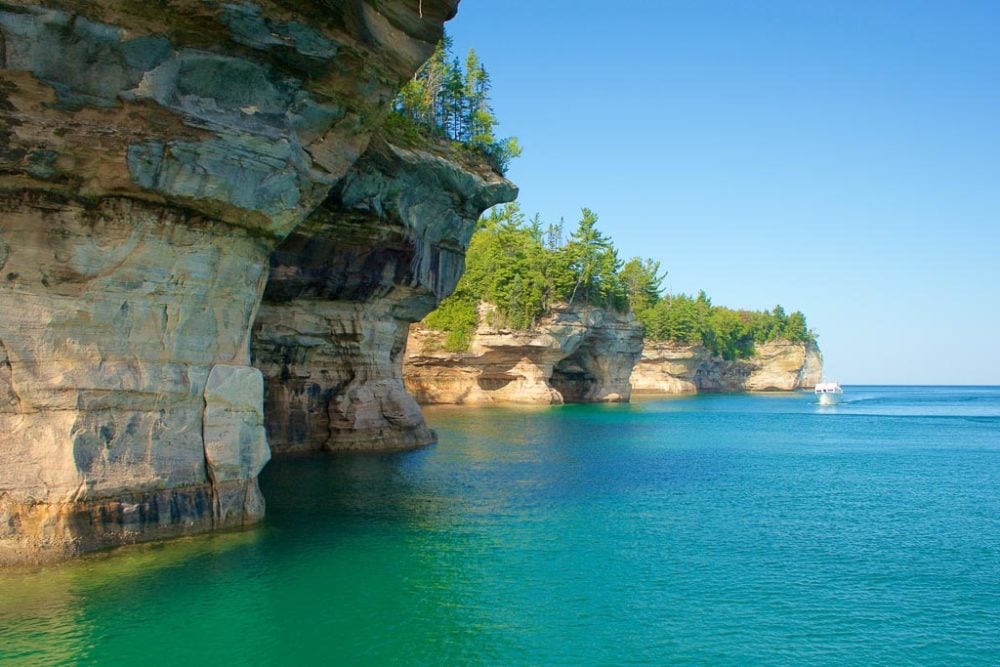
Located on Michigan’s Upper Peninsula, Pictured Rocks National Lakeshore is on the southern shore of Lake Superior.
“Unlike any other place on Lake Superior,” according to the National Park Service, “Pictured Rocks offers the opportunity to explore miles of pristine beaches, hike nearly 100 miles of trails, view towering sandstone cliffs, and experience the serenity of northern woodlands.” It’s a description as enticing as any.
The highlight and namesake of this beautiful national lakeshore are the Pictured Rocks themselves, a collection of dramatic, colorful cliffs and remarkable sandstone formations, such as the famous Miners Castle.
The best views of the multicolored cliffs are from Lake Superior, whether by kayak or a guided boat tour, while other popular activities are swimming and scuba diving, hiking, camping and fishing.
Other places of interest at this National Park Service site a half day’s drive north of Chicago include Sand Point, Twelvemile Beach, and the Grand Sable Banks and Dunes.
More information: https://www.nps.gov/piro/index.htm
Chicago National Parks Map
Check out the map below for a visual overview of the locations of the national parks near Chicago. This might help you figure out your options for a Chicago national parks road trip.
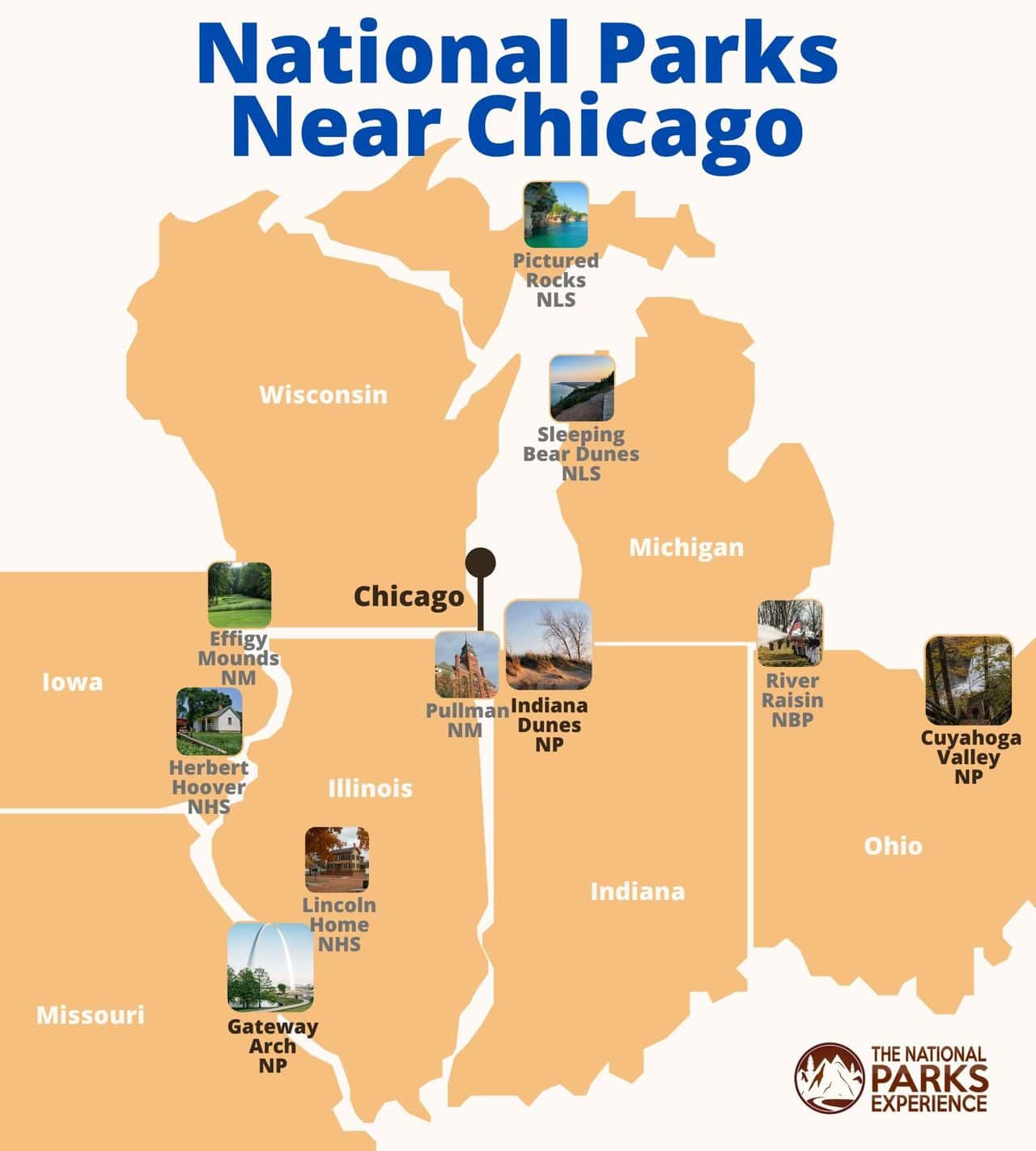
More National Park Service Sites Within a Day’s Drive from Chicago
In addition to the national parks close to Chicago above, you’ll also find several others in the greater Great Lakes region.
Some, such as Keweenaw, Apostle Islands and Isle Royale, might be combined with a couple of the above-mentioned Chicago national parks on an extended road trip.
- Perry’s Victory & International Peace Memorial, Ohio (290 miles)
- Charles Young Buffalo Soldiers National Monument, Ohio (315 miles)
- St. Croix National Scenic Riverway, Wisconsin and Minnesota (415 miles)
- Keweenaw National Historical Park, Michigan (425 miles)
- Isle Royale National Park, Michigan (465 miles)
- Apostle Islands National Lakeshore, Wisconsin (480 miles)
- Voyageurs National Park, Minnesota (610 miles)

